#hoshi mandara
Explore tagged Tumblr posts
Photo
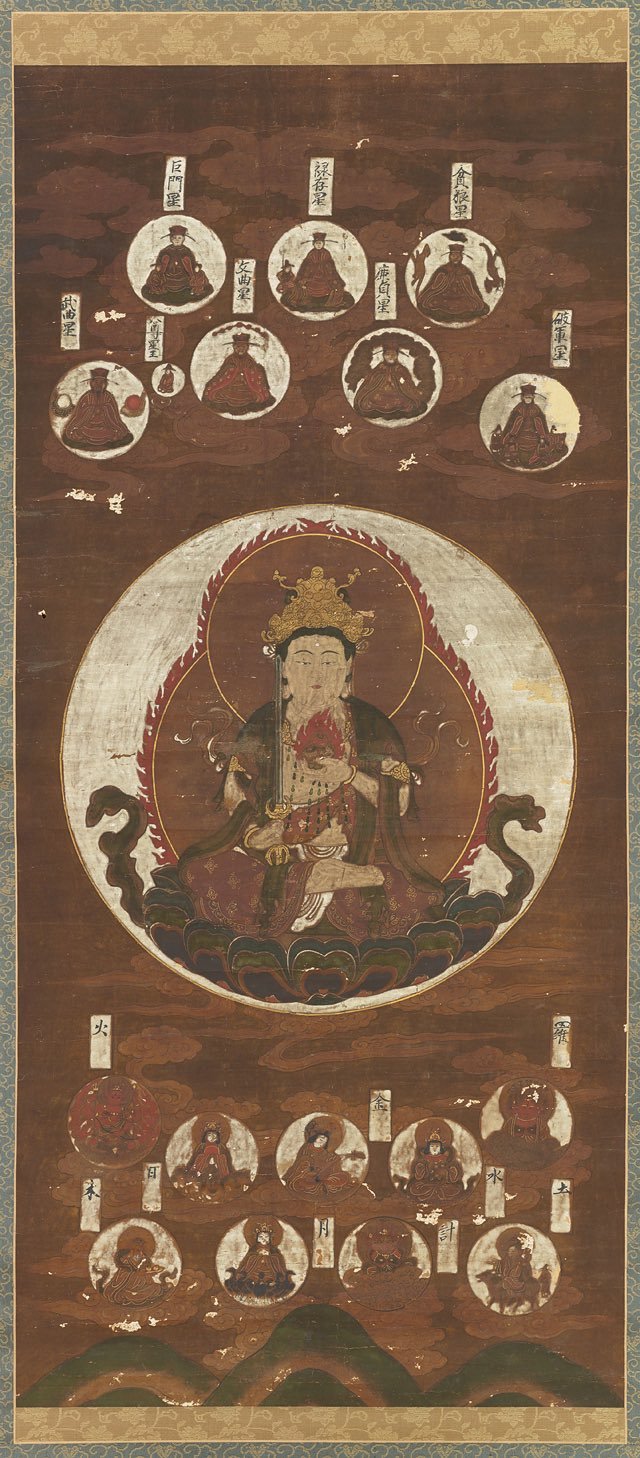
A hanging scroll of the Hoshi Mandara (星曼荼羅), a star mandala populated with astral deities featuring Kokūzō Bodhisattva (虛空藏菩薩) in the center surrounded by the Seven Stars of Ursa Major above and the Nine Planets below
For use during the Shintō Consecration Rite (神道灌頂), dating to the Edo period (1600-1868) from the collection of Henjōzan Saifukuji Temple (遍照山 西福寺) in Ide, Kyoto Prefecture
Image from the temple’s official twitter account
#japanese art#buddhist art#曼荼羅#mandala#星曼荼羅#hoshi mandara#虛空藏菩薩#虛空藏#kokuzo#京都府#kyoto prefecture#井手町#ide#遍照山 西福寺#henjozan saifukuji#真言宗#shingon#japanese religion#神道灌頂#shinto kanjo
17 notes
·
View notes
Photo

Diagram of Japanese mandalas of the cosmos
0 notes
Text
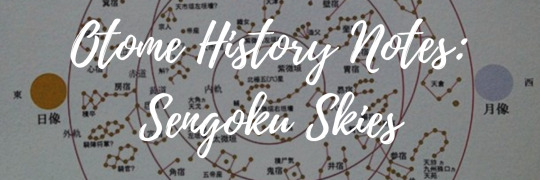
Not-so-long-long-ago in a discord server not-so-far-away I witnessed a question.

As a space nerd and aspiring anthropologist I just couldn't ignore the question of constellations around the world. Guys, gals, and non-binary pals this is a special episode of the otome history notebook where we cover a more scientific/cultural/history note as opposed to straight up history, so buckle your seatbelts and get ready to read about a most interesting topic: how people view the stars above.

If you were to stand on the North Pole exactly and look up at the stars, you'd see a portion of the sky rotating around a point directly above you. You'd never see the sky someone standing on exactly the South Pole would, although the sky you would see would also be rotating around a point on the pole.
The parts of the sky we can see change as you move down Earth's longitudes, so although there'd be some overlap in say, the sky you'd see in Chile vs the sky you'd see in Arizona, they would certainly be different. Along latitudes, however, you'd be able to see the same sky as someone else along that latitude would see at a different point in Earth's rotation (which is to say, a different time of the year).

Although there are differences along longitudes in what part of the sky we view, there's overlap. And of course, along longitudes people see the same part of the sky at different times of year. This should mean that a lot of different places can see the same constellations as you do, right? Wrong.
Different cultures have been able to look at the same star for millions of years, yet through storytelling connect that star to those around it in such different ways. Take Betelgeuse for example; in my home country of Canada the settlers brought stories of Orion, but the Inuit and Ojibwe peoples saw something entirely different when looking at that same general clump of stars. So did the Egyptians, so did the Chinese, and the Tupi.
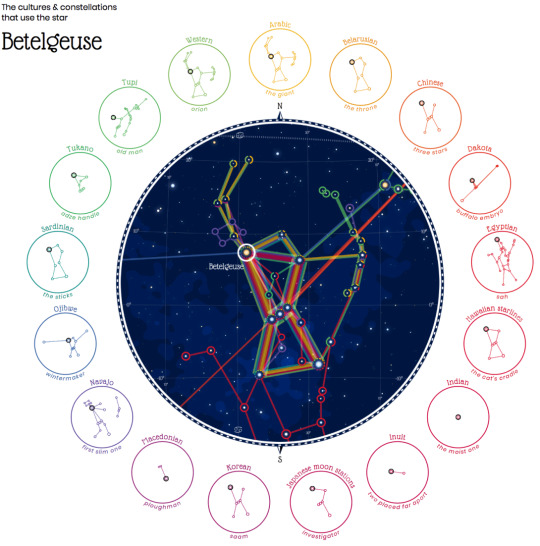
If you take a closer look at this diagram you'll see a little bubble labeled "Japanese moon stations". Hold up, does Japan have different constellations? Well, not in the modern day. Western constellations have become pretty standard worldwide, but in pre-Meiji era Japan there were indeed different constellations.

Before the Meiji era, astronomical observations were mainly for astrological purposes. These "astrological purposes" are the 28 lunar stations/lodges/mansions Japan derived from Chinese astrology. To be fair, China derived it's 28 lunar stations from Middle Eastern and Hindu astrology where they are Also A Thing. It just kinda became a big domino line across all of Asia that said "You know what we should do? Base our astrological divinations off of the lunar cycle".
The lunar mansions are divided up into four clusters, each made up of seven constellations. They're divided into four clusters because of the four cardinal directions. In China the four cardinal directions are associated with the Chinese emblems. The Chinese embelems are the tortoise for the north, the white tiger for the west, the phoenix for the south, and the dragon for the east.
However in Japanese astrology they're replaced with Four Heavenly Kings of Buddhism (or Shitenno, 四天王) that also guard the four cardinal directions.
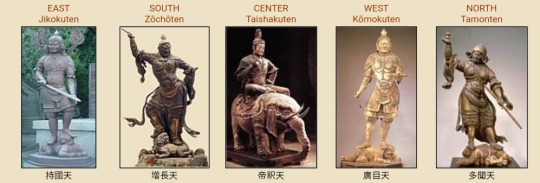
The 28 lodges themselves, are often represented in the astral mandalas of the Big Dipper Mandala (Hokuto Mandara, 北斗曼荼羅) and the Star Mandala (Hoshi Mandara, 星曼荼羅). These mandalas are associated with Japan's Esoteric Buddhist sect. When Chinese astrological lore was first introduced in Japan the Shingon and Tendai schools of the Esoteric sect were the most receptive.
Here you can see the constellations themselves drawn alongside the 28 celestial maidens.
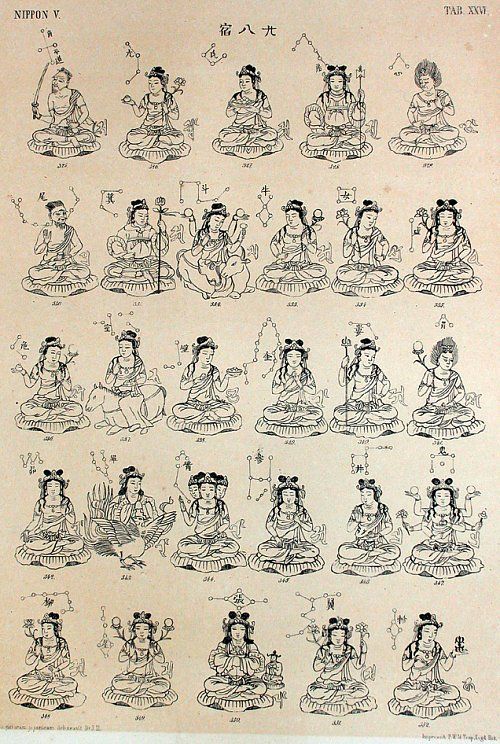
I can hear the echo of Shingen's pickup lines from here.
I won't go into the Japanese names of the constellations, because apparently they can differ and I can't find a source that definitively matches names to the actual constellations as a visual at the moment. Maybe I'll make a follow-up post? Who knows.
In the meantime, you can rest easy knowing that this was how the people of the Sengoku era told their stories of the stars.🌠
Join the Otome History Notes discord server!
Disclaimer: I am not a historian, and I don't have access to like actual archives or anything. Pls correct me if anything I said here was wrong.
S O U R C E S
55 notes
·
View notes
Text
STV Reacción | Mensajes con tu mejor amigo
reacción de svt (es que hay poco de ellos) sobre como reaccionarian cuando ven que tu estas muy entretenidx hablando por mensajes con tu mejor amigo y hay muchos te quiero, apodos cariñosos y corazones y pos tu no eres muy dulce ni con ellos...
S.Coups
No te diría absolutamnete nada. Le fastidiaba que todos esos emojis no fueran paraél, pero no quería mostrarte los celos que eso le provocaban. Sin embargo acabarías adivinandolo y sutilmente empeazrías a añadir corazones y emojis de besitos en vuestras conversaciones.

Woozi
“No me cae bien tu amigo”.
Te soltaría sin previo aviso. Habíais pasado toda la tarde juntos y pudiste notar que miraba por el rabillo del ojo la conversación que estabas teniendo con tu mejor amigo. No te importaba que lo hiciera, pero notabas que le cambiaba la cara cada vez que lo hacia; así que esas palabras inesperadas no te sorprendieron tanto. Desde ese día comezarías a ser algo más cariñosa por mensaje, para apaciguar los celos de ese pequeño gran hombre que tanto querías.

Wonwoo
Estaría celoso a más no poder. Claro que confiaba en ti,pero que le mandaras un montón de corazones a tú amigo cuando con él, por mensaje, eras fría, le fastidiariá. No te dría nada directamente, pero notarías por su actitud que algo no iba del todo bien.
“Vaya, que de corazones” te diría forzando una sonrisa. “No recuerdo la última vez que me mandaste uno a mi.”

Hoshi
¿Tu amigo y tu siempre habeis sido asi de cariñosos?
Hoshi te lo preguntaría porque realmente le sorprendía. No es una persona my celosa pero no llegaba a entender del todo porque con tu amigo por mensaje eras muy cariñosa y con él no. Lelgaría a pensar que era algo típico de tu país. Su inocencia te daría tanta ternura que no podrías evitar abrazarlo.

Jun
“Pensaba que era el único para tí...”
Jun malinterpretaría las cosas. Pensaría que tu mejor amigo lo estaba reemplazando, ocupando su lugar en tu corazón. No era que no confiara en tí, si no que te quería tanto que te consideraba demasiado buena para él. Tendrías que explicarle que esos mensajes no signifcaban más que el amor de una buena amistad y que él era el único para que se calmara.

Vernon
“¿¡Porque conmigo no eres así!?”
A Vernon directamente le molestaría. Sepondría súper celoso, al igaul que Wonwoo trataría de esconderlo, pero llegado un momento no aguantaría más y tendría que decirtelo. Tendrías que empezar a ser cariñosa por mensaje para que se le pasara el cabreo.

D.K
Se sentiría muy mal consigo mismo ¿Acaso él no te demostraba tanto amor como tu amigo?¿Acaso tendría que esforzarse más? Esta bolita le daría más importancía de la que realmente tenía.
“T/N aun me quieres ¿verdad?”

66 notes
·
View notes
Photo

The third day of the Star Festival (星まつり) at Okadera Temple (岡寺) in Asuka Village, Nara Prefecture, on January 29, 2023, with a hanging scroll of the Hoshi Mandara (星曼荼羅) in the foreground and the temple’s main image of Nyoirin Kannon Bodhisattva (如意輪観音菩薩) in the background
Image from the temple’s official Twitter account
#buddhist temple#奈良県#nara prefecture#明日香村#asuka#岡寺#okadera#japanese religion#星まつり#hoshi matsuri#曼荼羅#mandala#星曼荼羅#hoshi mandara#如意輪観音菩薩#如意輪観音#nyoirin kannon#観音菩薩#観音#kannon#avalokitesvara#festival
11 notes
·
View notes
Photo

A hanging scroll of the Hoshi Mandara (星曼荼羅), a star mandala populated with astral deities featuring Śākyamuni Buddha (釈迦如来 Shaka Nyorai) in the center holding a royal golden wheel, surrounded by the Seven Stars of Ursa Major above and the Nine Planets below, then the twelve signs of the Zodiac, and finally along the outer rim the 28 constellations tracking the moon’s daily movements
Ink, color, and gold on silk dating to the mid-12th century, from the collection of Hōryūji Temple (法隆寺) in Ikaruga, Nara Prefecture
Image from “With a Single Glance: Buddhist Icon and Early Mikkyō Vision” by Cynthea J. Bogel, University of Washington Press, 2009, page 72
#japanese art#buddhist art#曼荼羅#mandala#星曼荼羅#hoshi mandara#奈良県#nara prefecture#斑鳩町#ikaruga#法隆寺#horyuji#釈迦如来#shaka nyorai#shakyamuni#北斗七星#hokuto shichisei#ursa major#九曜#kuyo#十二宮#junikyu#zodiac#二十八宿#nijuhasshuku#lunar lodges#lunar mansions#crazyfoxarchives
33 notes
·
View notes